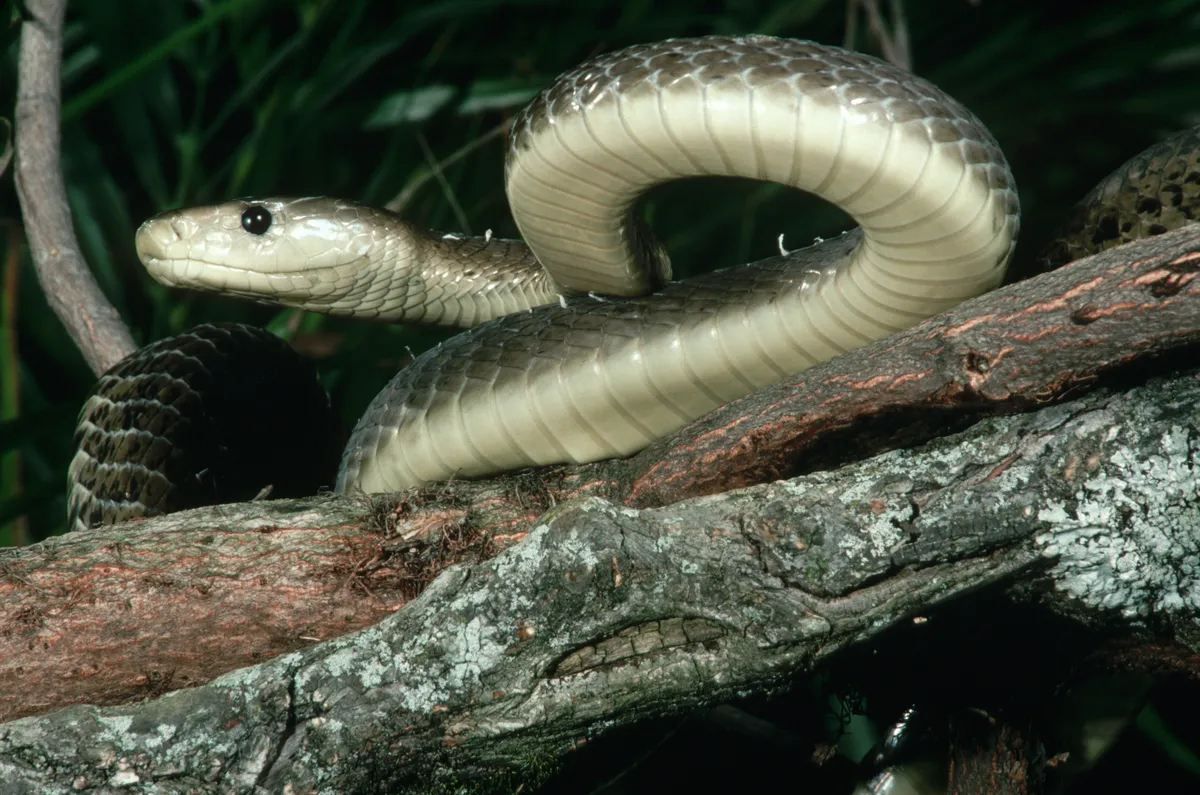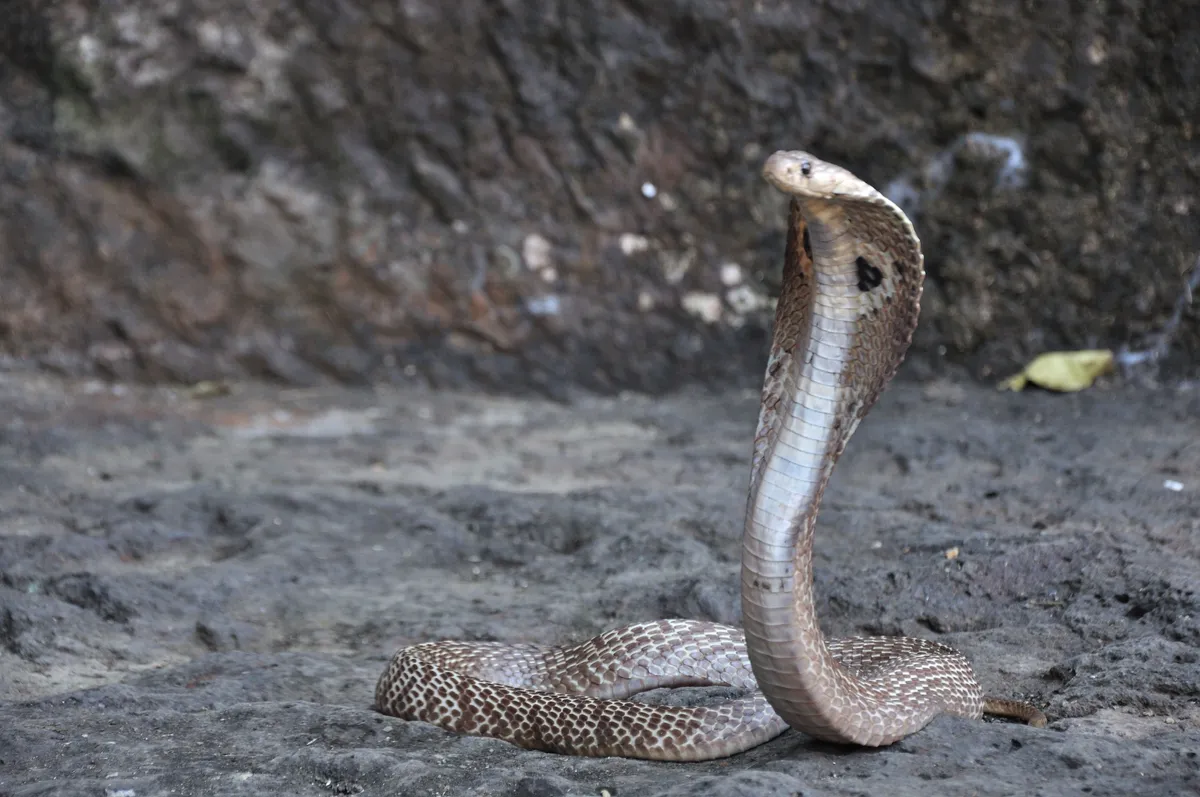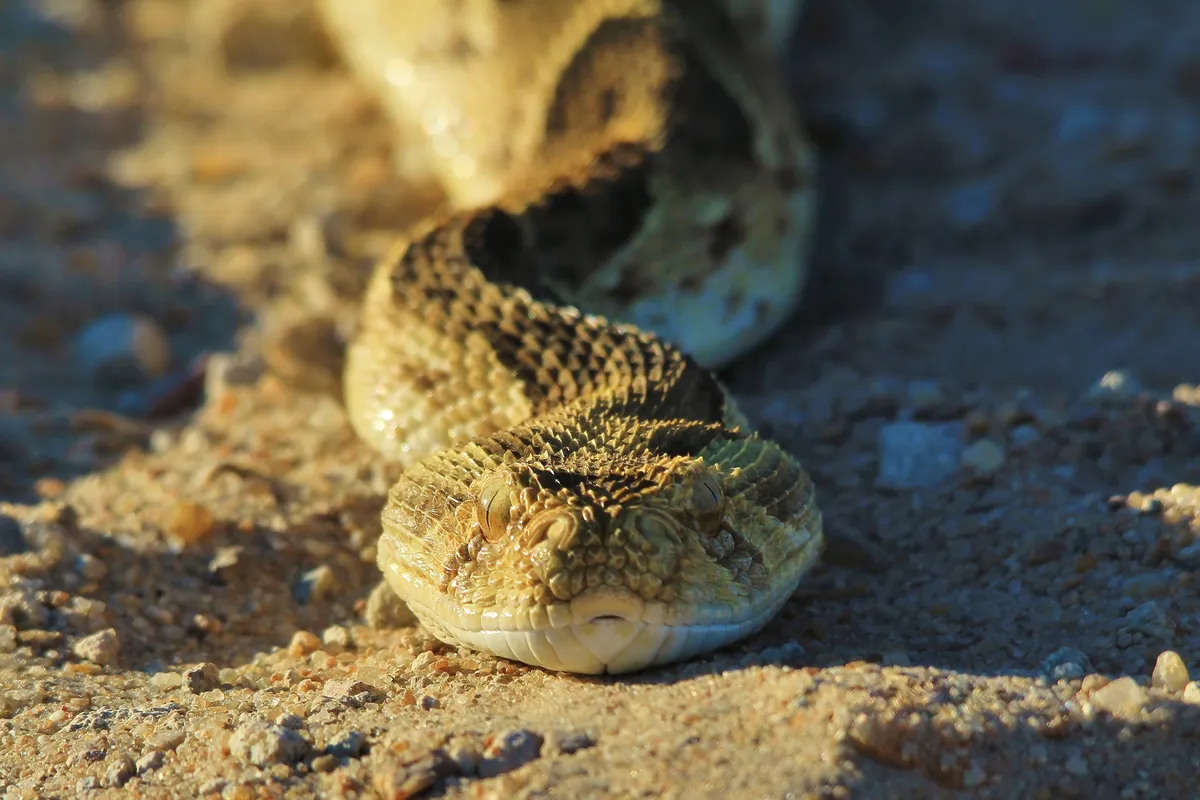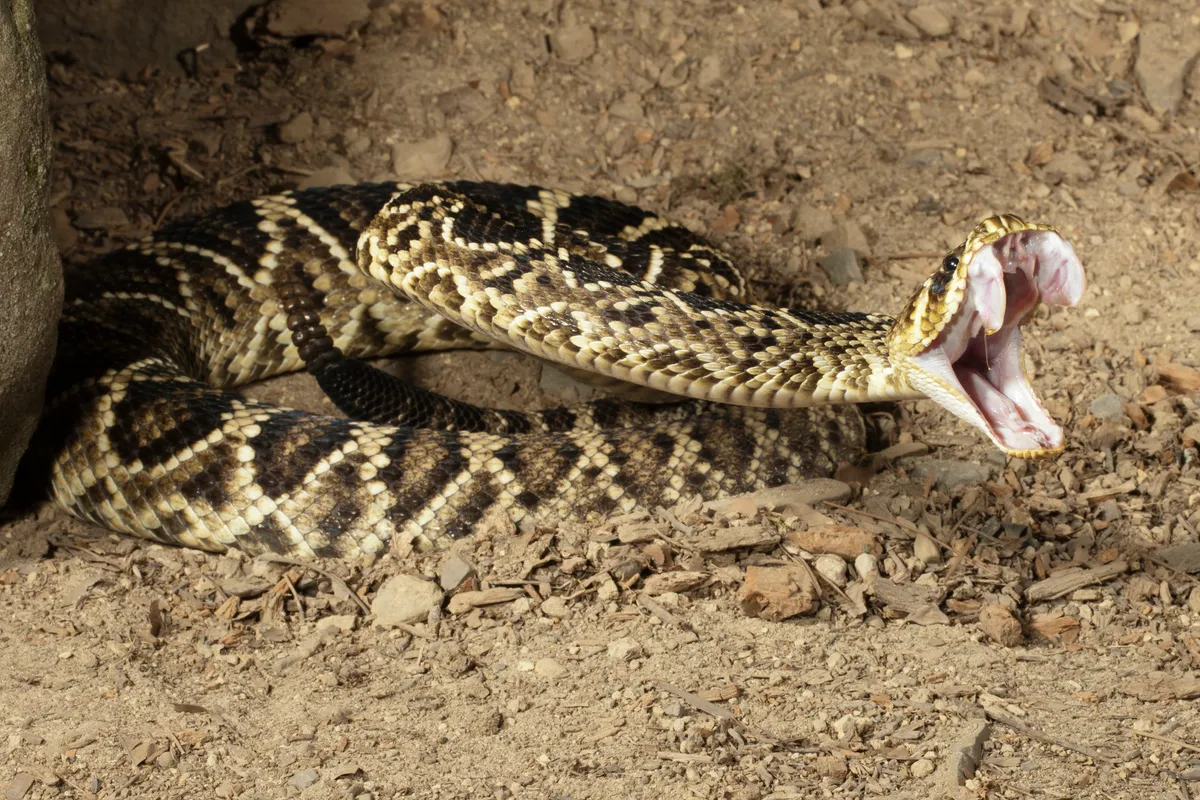Did you know snake bites are responsible for as many as 138,000 human fatalities each year?
This makes snakes pretty high up on the list of deadly animals, with only humans and those that spread diseases (such as mosquitos, the world's deadliest insect) killing more.
How many snakes are venomous?
That is not to say all snakes are deadly and dangerous, however. Of the around 3,900 species only 725 are venomous, and of these only 250 are able to kill a human with one bite. It is possible for non-venomous snakes to kill humans, but this is excessively rare (around one or two deaths per year), and mostly limited to interactions with pet constrictor snakes like pythons.
- Snake venom cure: Scientists develop fake blood vessels to help reduce deadly bites
- Largest snake species in the world discovered in Amazon rainforest – and it's a whopper!
Venomous snakes on the other hand are responsible for a great many deaths, as well as injuries like tissue necrosis resulting in amputation. Snake bites occur most commonly and severely in developing countries where antivenom is less easily available, especially in rural areas. Read on to learn about the top 10 deadliest venomous snakes.
Deadliest snakes in the world
1. Saw-scaled viper (Echis carinatus)
When discussing venomous snakes, deadly could mean one of two things. It could either mean the snake that kills the most people, or it could mean the most highly toxic snake - the one that is most likely to kill you if it bites you.
These can be very different things, as those with the most potent venom are not necessarily the most common, commonly in contact with humans, aggressive, or bold.
The snake that is thought to kill the most people annually, and therefore the world's deadliest snake, is the saw-scaled viper, a particularly aggressive species found in the Middle East and central Asia. It is this aggression, as well as its presence in densely populated areas, that determines its deadliness, making it responsible for an estimated 5,000 human fatalities per year in India alone.
Learn about the difference between venomous and poisonous
Inland taipan (Oxyuranus microlepidotus)
On the other hand, when it comes to the most toxic, the inland taipan takes the prize. Endemic to semi-arid regions of central east Australia this snake is a specialist hunter of mammals (primarily rodents), so has evolved a potent venom adapted to kill warm-blooded animals.
This venom is by far the most toxic of any snake. It is estimated that just one bite contains enough lethality to kill at least 100 adult humans! Compared to the saw-scaled viper, however, it doesn't actually kill very many at all, with only a few recorded fatalities ever. This is primarily because it rarely comes into contact with humans, living in remote places and spending a lot of its time underground.
We named the inland tapia one of the world's most venomous animals
Black mamba (Dendroaspis polylepis)

Another snake with extremely potent venom is the black mamba. This snake, found in sub-Saharan Africa, is one of the most feared of all. Unlike the relatively docile inland taipan, the black mamba is known to be particularly aggressive.
Although it does not seek out humans, when cornered or threatened it will rear up and strike repeatedly. This is a situation you definitely do not want to be in, as the black mamba is also renowned for the speed with which it can kill.
Neurological symptoms such as slurred speech and muscle twitches can start to become evident within 10 minutes of the bite and death can result within as little as half an hour. Untreated bites have a terrifying 100% mortality rate, making the speed of treatment and availability of antivenom crucial.
Russel’s viper (Daboia russelii)

Next on our list is a snake you really wouldn’t want to meet. The Russel’s viper is known to have one of the most excruciatingly painful bites of all. It is also known to be aggressive and quick to bite.
Along with the Indian cobra, the common krait, and the saw-scaled viper, it belongs to what are called “the Big Four”. These four snakes are responsible for causing the most medically significant snake bites on the Indian Subcontinent.
The Russel’s viper is the source of most of these, accounting for 43% of all snakebites in India. Thankfully an antivenom has been developed that can be used as treatment against bites from all the Big Four, saving many lives.
Common krait (Bungarus caeruleus)
This Big Four member is again excessively toxic, with an untreated mortality rate of around 80%. Unlike the Russel’s viper, however, the bite is often not painful, leading to false reassurance in victims.
Its venom consists of strong neurotoxins which lead to muscle paralysis, respiratory failure, and death. Thankfully however it is a nocturnal hunter, feeding on other snakes, small mammals, and frogs at night. This means that you have to be quite unlucky to encounter one and are only likely to be bitten if you step on one in the dark.
Indian cobra (Naja naja)

Perhaps the most iconic of all deadly snakes is the Indian cobra. It holds a special place in Hindu culture and folklore and is the species you might see with a snake charmer.
The Hindu god Shiva is often depicted with a cobra. They are rightfully respected and feared as well as revered, however. As a member of the Big Four it is highly venomous and deadly, and unfortunately encounters with humans are frequent, as it tends to hunt rodents in populated areas. Although a bite from an adult cobra can kill, curiously there has been in the past a risky practice of using the venom of young individuals as a form of substance abuse! It apparently has psychoactive effects (although I wouldn’t care to find out).
Puff adder (Bitis arietans)

Moving away from the Indian subcontinent, we come to the large and frightening puff adder. This species of viper is responsible for more fatalities than any other African snake.
When threatened it is more likely to stay put than to flee, making it especially dangerous, and unfortunately, it has a habit of basking on footpaths. Before it strikes it will give a chilling warning, inflating its body and hissing loudly. Although the untreated mortality rate is fairly low (around 15%), serious bites can cause spreading necrosis and gangrene, which can lead to losing digits or limbs.
Common death adder (Acanthophis antarcticus)

The aptly named death adder is native to Australia, found in forest, woodlands, and grasslands. Although not known to be aggressive, its dependence on camouflage and ambush for hunting its prey, including covering itself in leaves, means it is especially dangerous for humans venturing into bush who may step on one unawares.
Its venom is also very potent, with an untreated mortality rate of about 60%. Although it is still widespread it is under threat from invasive cane toads. These introduced toads eat young death adders and adult snakes who eat them in return are poisoned by toxic glands on their skin.
Although we don’t have cane toads in the UK, we do have our own damaging invasive species.
King cobra (Ophiophagus hannah)
The next on our list holds the distinction of being the world’s longest venomous snake, at an impressive four metres on average, with a maximum record of 5.85 metres!
Like the Indian cobra, the regally named king cobra holds a special cultural significance in the Indian subcontinent. It is regarded as the national reptile of India, but despite this is unfortunately threatened by both habitat destruction and poaching for use in traditional Chinese medicine. Killing a king cobra is a serious offence in India with imprisonment of up to six years!
Learn all about how king cobras build their nests with our handy explainer. You can also learn about the world’s longest snake
Eastern Diamondback Rattlesnake (Crotalus adamanteus) - Deadliest snake in north America

The first American snake on our list, as well as the first rattlesnake, this is in fact the deadliest snake in North America. Compared to Asia this is fairly small fry however, as only about 5 people per year die from snakebites in the United States (compared to over 64,000 people in India for example). The Eastern Diamondback Rattlesnake is a particularly large and heavy snake, weighing as much as 15.4kg, with frightening 1-inch long fangs. It carries a powerful hemotoxin in its venom, which damages red blood cells and causes tissue damage. The untreated mortality rate of its bite is around 20%.
Tiger snake

This highly venomous southern Australian species accounts for a considerable percentage of snakebite victims recorded in the country.
Its potent venom contains a procoagulant toxin that causes venom-induced consumption coagulopathy (VICC) in its unfortunate victims - in other words, a serious condition that causes uncontrolled bleeding as the blood loses its ability to clot properly.
Thankfully there is an effective antivenom treatment, and according to one study, mortality occurs in only about 3% of bite cases.
Unfortunately for those wanting to identify this notorious snake, it varies a lot in appearance, existing in several different ‘morphs’ of differing sizes and colours, from striped yellow to jet-black. However, a wide, robust head, almost flush with its muscular body and with a flat snout is common to all populations.
Coastal taipan (Oxyuranus scutellatus)

This snake is a close relative of the infamous inland taipan.
It has the distinction of being the second-longest venomous snake in Australia, measuring as much as 9.5 ft in length, and a member of this species has also recently broken the record for the most venom produced in one go.
A male called Cyclone who lives at the Australian Reptile Park produced 5.2 grams of pure venom in a single ‘milking’. That's enough to kill around 400 humans! The centre ‘milks’ their venomous snakes for use in producing antivenoms.
Eastern brown snake (Pseudonaja textilis)

The lethal dose for humans of venom from the Eastern brown snake is just 3 mg. Alarmingly, it causes more deaths from snake bite than any other species of snake in Australia.
The lethal dose for humans of venom from the Eastern brown snake is just 3 mg. Alarmingly, it causes more deaths from snake bite than any other species of snake in Australia
More fascinating snake facts
Header image: Inland taipan, one of the world's most deadliest snakes © Getty Images








